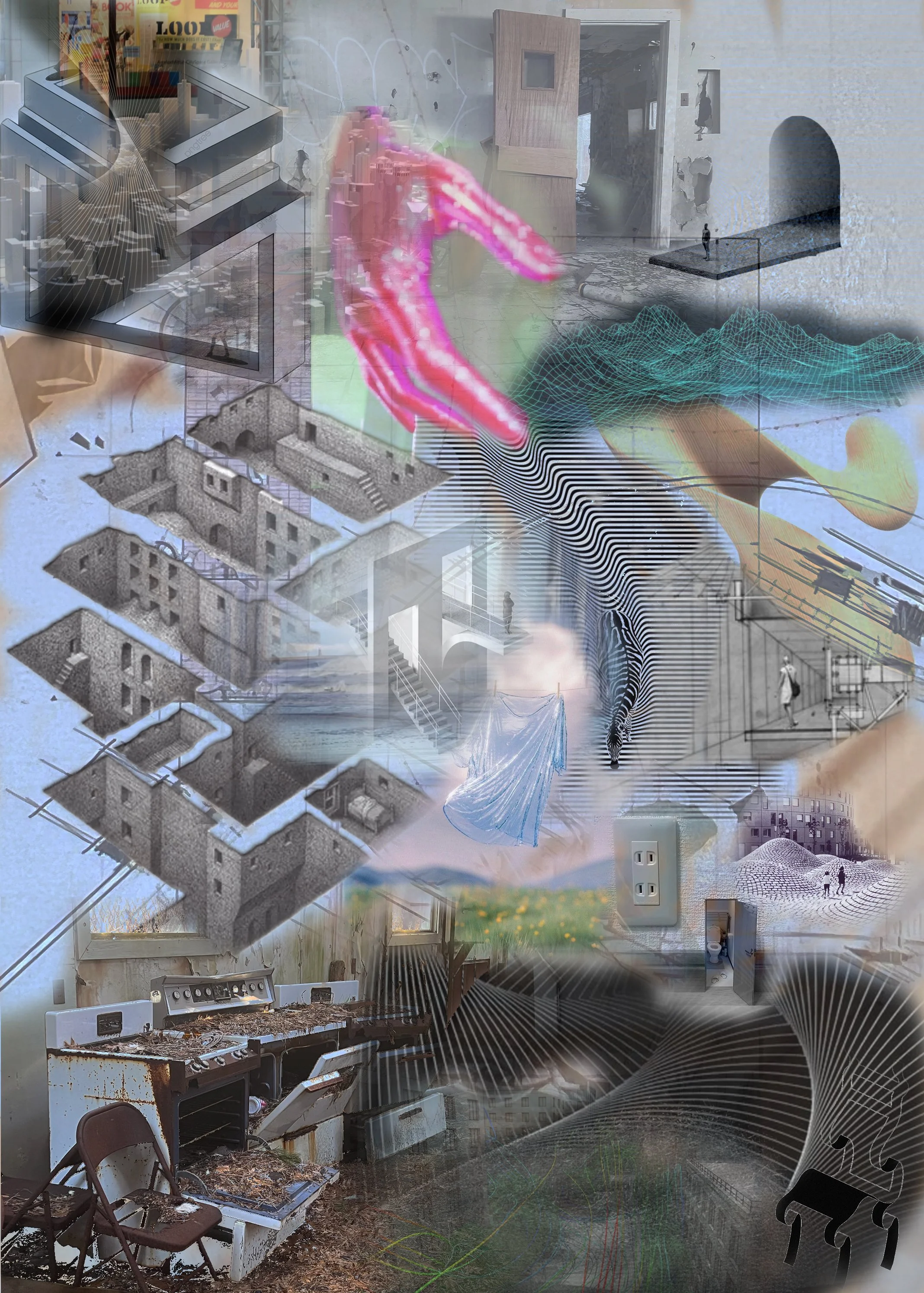This project investigates the experience and interpretation of space by visualizing the action of subverting and in turn disrupting the relationship between human body and the built environment. As Lefebvre postulates, space is a productive force with the capacity to produce and reproduce social life. By collapsing the various modes through which space is created it becomes far easier to examine the historical truth and present realities. Space is created through “spatial practice” -- the experience of everyday life with its routines, routes, and places for various activities. It exists as “representations of space” – as it is conceptualized by planners, social engineers, and architects with their theoretical concepts.
The project investigates the experience and interpretation of space by visualizing the action of subverting and in turn disrupting the relationship between human body and the built environment. As Lefebvre postulates, space is a productive force with the capacity to produce and reproduce social life. By collapsing the various modes through which space is created it becomes far easier to examine the historical truth and present realities. Space is created through “spatial practice” -- the experience of everyday life with its routines, routes, and places for various activities. It exists as “representations of space” – as it is conceptualized by planners, social engineers, and architects with their theoretical concepts.
When new infrastructure is introduced, it is often inaccessible to those occupying the existing spaces and does them more harm than good. New building projects often contribute to destruction of existing neighborhoods, requiring demolition of existing buildings—each with its own history and cultural heritage-- only to produce new amenities for the wealthy while displacing or disenfranchising the poor. In Providence, as in many other cities, highways built with federal funding were routed through poor and Black areas, destroying housing, and chopping up the neighborhoods (Coren, Providence Tomorrow)
The compilation of social interactions, memories, feelings, imaginings, and daily use (or exclusion) are made into places that convey particular meanings (Low). This project exposes these dynamics through removing the human body from the equation and centering on the transformative power of space. The fluctuation of space at will, prompted only by the existence of the player’s viewing experience, breaks free from the rigid outdated standards of architecture and the norms of the built environment.
Link for Macbook:
Link for PC:
